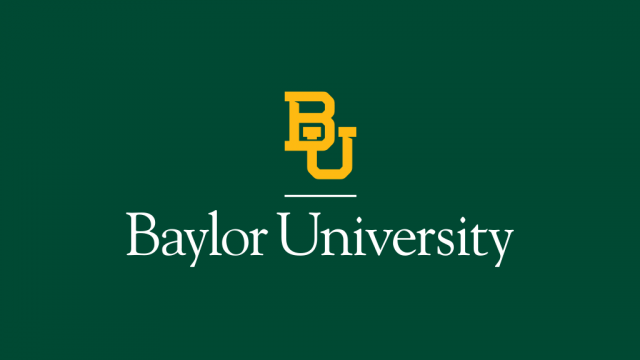Newswise — WACO, Texas (Aug. 5, 2015) – The presidential debates have arrived.
The latest count shows that there are 22 confirmed candidates vying to be the next President of the United States. Yes, 22.
So many people. So many messages. So many sound bites. So. Much. Noise.
Matthew G. Gerber, Ph.D., associate professor of communication and director of Baylor’s nationally recognized debate program, says viewers who are serious about learning about the candidates should be equipped to cut through the campaign clutter and zero in on their respective messages – or lack thereof.
“It is productive to approach these types of debates with an open mind,” Gerber said. “Viewers should strive to consume the debate and form opinions as a ‘tabula rosa’ judge, which means to have a ‘blank slate’ when the debates begin.”
He offers these five tips:
1. Don’t fall for “zingers” or good “one-liners.”
“Those jokes are usually pre-planned, and are designed to provide good sound bites to the media,” Gerber said. “Humor is persuasive, but as voters, are we really interested in a candidate’s comedic timing or ability to tell a good joke? We shouldn’t be.”
2. Don’t accept criticism without a solution.
“It’s easy for a candidate to point out problems with the status quo, or ‘the ways things are.’” Gerber said. “It’s much more difficult to offer up a solution or alternative way of solving those problems. Many of the candidates will do just that – offer a blistering criticism of the current system without offering viable alternatives.”
3. Be aware of your own predispositions and biases.
There is a tendency among voters (and human beings in general) to latch onto opinions or messages that cohere to one’s own beliefs and value structure, Gerber explained, adding that it’s best to keep an open mind.
4. Take notes.
Voters should keep notes during the debate and write down key points, arguments and positions taken by each candidate, Gerber said. Once the debate is over, having notes to reference will assist with decision-making.
Note taking allows voters to answer questions such as: Who really did have the most airtime in the debate? Was that airtime equally distributed? Which candidate made more policy-based arguments, and which candidates focused more on character attacks or one-liners? Which candidate was the best at asking and answering questions? Who did the best under cross-examination from opponents? What are the distinctions between the candidates?
5. Remember that substance outweighs style.
Gerber said voters should focus on which candidate has the best ideas to solve the nation’s problems, not who looks or sounds the best. The Kennedy-Nixon debates from 1960 are a perfect example, he said.
“Most experts thought that Nixon had come out ahead, or called the debate a draw. However, the 70 million public television viewers sided with Kennedy by a large majority,” Gerber explained. “In front of the cameras, Kennedy presented the picture of health and confidence, compared to Nixon who had the flu, needed a shave and seemed cranky despite making solid policy arguments throughout the debate.”
ABOUT MATTHEW GERBERMatthew G. Gerber, Ph.D., is associate professor of communication in Baylor University’s College of Arts & Sciences. He has been coaching debate at Baylor since 2003 and was named director of the Glenn R. Capp Debate Forum in 2006. He has been debating since 1988, when he was in eighth grade. As a college debater, he qualified for the National Debate Tournament three times. He’s judged hundreds of college, high school and public debates during his career. His research areas include argumentation and debate, rhetorical criticism, and specifically, the rhetoric of American foreign policy. Baylor’s debate program has been represented at the National Debate Tournament more than 50 times since 1947, including three national championships and nine Final Four appearances.
ABOUT BAYLOR UNIVERSITYBaylor University is a private Christian University and a nationally ranked research institution, characterized as having “high research activity” by the Carnegie Foundation for the Advancement of Teaching. The University provides a vibrant campus community for approximately 16,000 students by blending interdisciplinary research with an international reputation for educational excellence and a faculty commitment to teaching and scholarship. Chartered in 1845 by the Republic of Texas through the efforts of Baptist pioneers, Baylor is the oldest continually operating University in Texas. Located in Waco, Baylor welcomes students from all 50 states and more than 80 countries to study a broad range of degrees among its 12 nationally recognized academic divisions. Baylor sponsors 19 varsity athletic teams and is a founding member of the Big 12 Conference.
ABOUT BAYLOR COLLEGE OF ARTS & SCIENCESThe College of Arts & Sciences is Baylor University’s oldest and largest academic division, consisting of 24 academic departments and 13 academic centers and institutes. The more than 5,000 courses taught in the College span topics from art and theatre to religion, philosophy, sociology and the natural sciences. Faculty conduct research around the world, and research on the undergraduate and graduate level is prevalent throughout all disciplines. Visit www.baylor.edu/artsandsciences.
